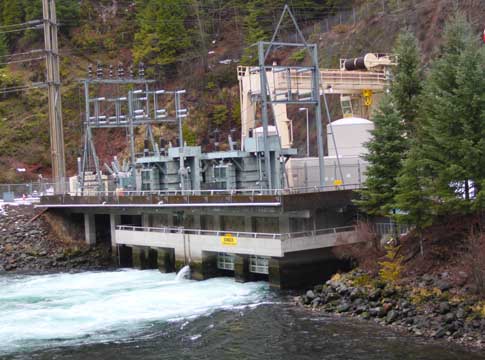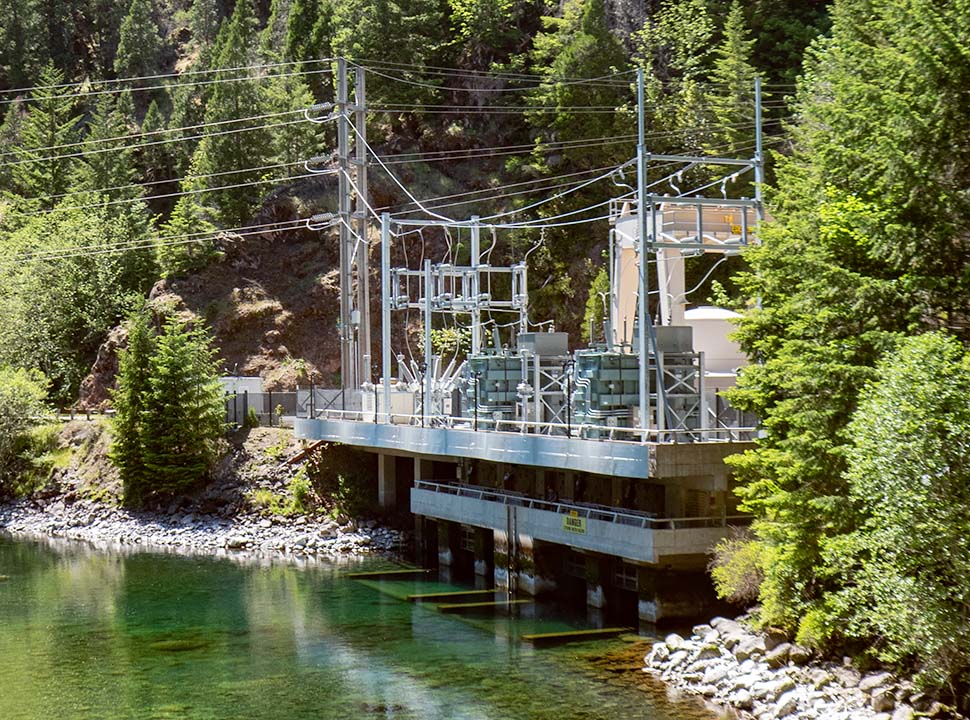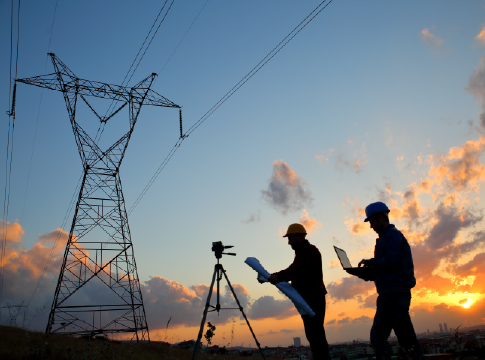More information
EWEB’s Integrated Resource Plan (IRP) will analyze possible energy resource portfolios with a goal of creating useful insights for long-term (20-year) electricity supply planning decisions.
Electric Outage: 1-844-484-2300
Water Emergency: 541-685-7595
EWEB Main: 541-685-7000
The utility is testing new equipment, leveraging technology, and incorporating third-party expertise to bolster electric system resiliency to a range of threats, including wildfire.
Find Out MoreGet ready to cast your vote for the winner of the 2025 Greenpower Grant. EWEB is excited to announce the eligible candidates for this year's grant award! The winner of the Greenpower Grant will be voted on by Greenpower subscribers. Learn more about each origanization and their proposal before casting your vote.
Find Out MoreEWEB’s Fleet Services team reached a major safety milestone: 200,000 work hours without a workplace injury that results in an employee losing at least one full day of work.
Find Out MoreSwitching to renewable fuels in EWEB’s fleet operations has played a key role in reducing the utility's greenhouse gas emissions.
Find Out MorePreliminary results of an EWEB study indicate that cutting back demand can contribute to maintaining a reliable, affordable energy supply.
Find Out MoreEWEB expresses disappointment that groups choose court over collaboration and firmly disputes the claims made in the lawsuit relating to operation of the utility’s Carmen-Smith Hydroelectric Project nearly 70 miles east of Eugene. EWEB takes its environmental and public safety responsibilities seriously. Contrary to the assertions in the lawsuit, construction of fish passage was postponed because EWEB’s regulator, the Federal Energy Regulatory Commission (FERC), required the utility to study and resolve urgent dam safety issues first.
Find Out MoreThe Greenpower Grant, funded by voluntary customer subscriptions to Greenpower, not customer grants, supports projects that advance renewable energy, clean energy education or efforts to reduce or offset local carbon emissions.
Find Out MoreOne week into Women's History Month and just before International Women's Day on March 8, three women in EWEB leadership roles embarked on a 10-month-long journey of mentorship, fellowship, and professional development.
Find Out MoreBusinesses can cut energy costs with EWEB’s free Energy Assessments and efficiency programs. Plus, for a limited time, BRING is offering $1,000 rebates for qualifying upgrades—apply by Feb. 28!
Find Out MoreEWEB line techs are proud partners and participants in the rodeo fundraiser every year.
Find Out MoreFrom blocking a draft to replacing your heating system, each action you take can save water and electricity.
Find Out MoreFrigid temperatures in the low 20s caused surging electricity demand in early February.
Find Out MoreFive grants support programs benefiting homeless youth and bike sharing, among others.
Find Out MorePeak electricity demand this season surpasses demand levels during last year’s ice storm.
Find Out MoreCost of rebuilding EWEB's electrical system will surpass $11 million
Find Out MoreSeptember 26, 2023 • Aaron Orlowski, EWEB Communications

For the last 18 months, EWEB has been studying how we can best meet the community’s future electricity needs.
This Integrated Resource Planning (IRP) process has generated significant community discussion about Eugene’s electricity future – which is a good thing!
In August, we reached a milestone: EWEB’s five-member elected Board of Commissioners approved an action plan to guide us for the next 2-3 years. (Check out the Eugene Weekly op-ed by EWEB General Manager Frank Lawson that sums up the IRP study and action plan.)
The short story is that even though electricity demand will rise, EWEB doesn’t need to procure any additional resources for at least a few years. So, we’ll spend that time conducting future studies and preparing for the 2025 IRP, since we’re publishing a new IRP every two years.
For more details, read on!
How did we arrive here?
In December 2022, we published an initial public draft of the IRP. The modeling results in the draft indicated that if future conditions are moderate, then we can largely meet those electricity needs with a foundation of hydropower (which we already have) plus new wind farms and new utility-scale batteries.
In June 2023, we announced additional modeling results that indicated that if demand rises more dramatically, then we may need to look at adding in additional low- and zero-carbon, on-demand resources (plus the resources mentioned above). In our modeling results these additional resources showed up as biomass and small modular nuclear reactors, though other emerging technologies such as geothermal may be able to fill the same need.
Note: These were modeling results, not procurement plans. To create the modeling results, we used advanced software to generate portfolios of possible energy resources that align with EWEB’s core values. Portfolios had to be reliable and avoid blackouts – meeting peak demand, which occurs in the winter. Portfolios had to be affordable – keeping rates low by being the lowest cost option. And portfolios had to be environmentally responsible – 95% carbon-free, in accordance with EWEB’s climate change policy.
In July and August 2023, EWEB’s Board of Commissioners discussed then approved an IRP action plan for the next 2-3 years. None of the action items involve procuring new resources. In fact, one of the action items is to develop a formal resource procurement strategy, because we need a strategy and method before we can actually procure anything.
Other action items include conducting studies of the potential for more conservation and new demand response programs in Eugene. Another action item is prepping for the 2025 IRP by updating our data and inputs. Assuming good pricing data for geothermal becomes available in the next two years, we’re hopeful we can model that resource in the 2025 IRP. There will be a lot of other updates, too, including pricing updates that incorporate Inflation Reduction Act funding.
EWEB’s Integrated Resource Plan (IRP) will analyze possible energy resource portfolios with a goal of creating useful insights for long-term (20-year) electricity supply planning decisions.
Para asistencia en español llame al 541-685-7000, presione 9
Mailing Address: 4200 Roosevelt Blvd., Eugene, OR 97402
Phone: 541-685-7000
Toll free: 800-841-5871
Email: eweb.answers@eweb.org
Customer service phone hours: 8:30 a.m. to 5 p.m. Monday - Friday



